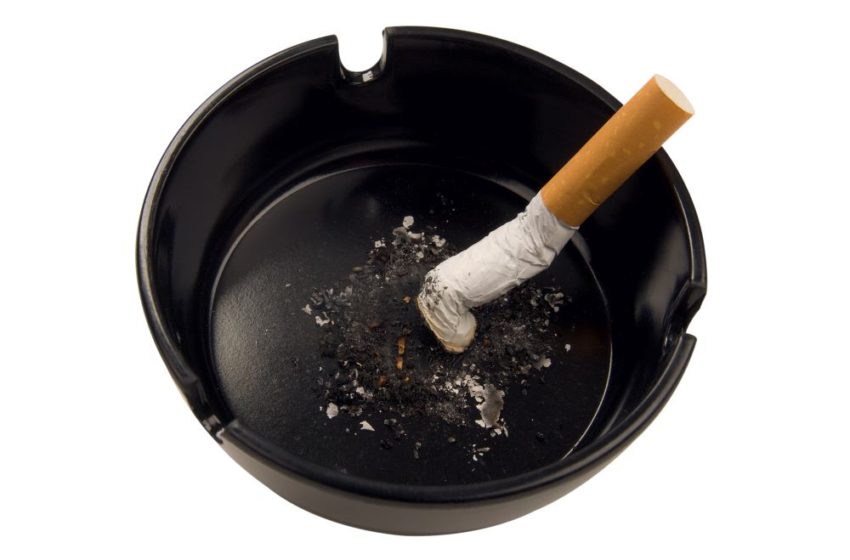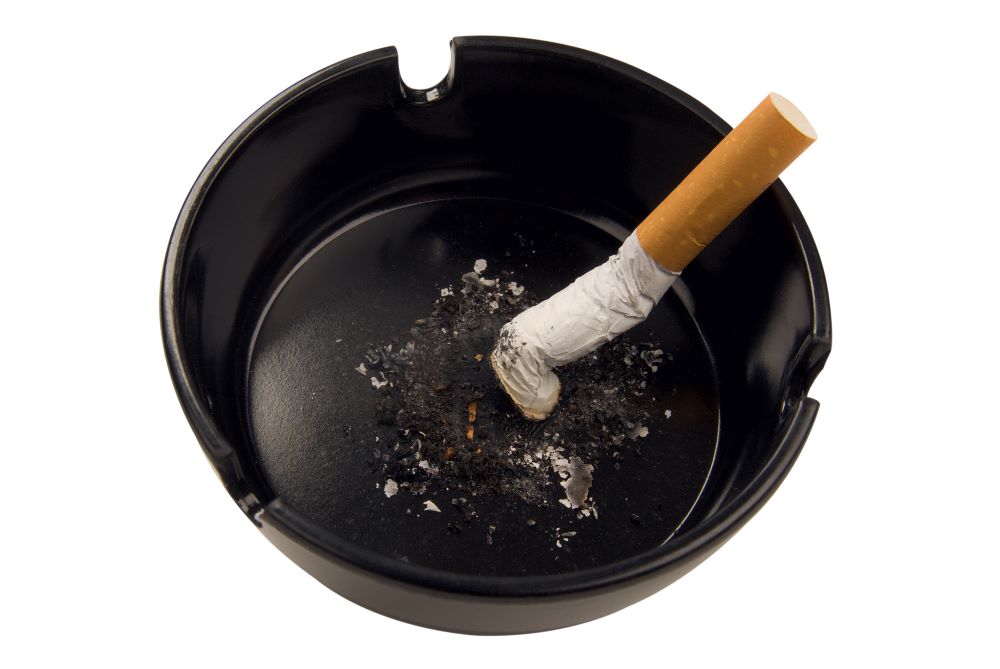Where’s the Parade?
- Also in TR Cheryl Olson Print Edition
- March 1, 2023
- 0
- 12 minutes read

Photo: TRITOOTH

Record-low youth smoking rates get no respect.
By Cheryl K. Olson
Back in 2009, when planning its 10-year public health objectives, the U.S. Department of Health and Human Services (DHHS) set an ambitious goal for reducing youth smoking. At the time, said government data, one in five teens (19.5 percent) had lit up in the past month. The Healthy People 2020 target was 16 percent.
These targets aren’t meant to be slam-dunks. In 2020, a third of the 985 trackable Healthy People objectives were met; the rest improved some, stayed the same or got worse. So what happened with high school smoking?
It plummeted. After passing the goal in 2013 (15.7 percent), teen cigarette use kept on falling. At the ten-year mark, in 2019, it hit 6 percent.
The Healthy People 2030 youth smoking target is 3.4 percent. The newest national figures suggest we’ve already left that number in the dust. The 2022 National Youth Tobacco Survey (NYTS) pegged high school cigarette use at an astonishingly low 2.0 percent. That’s even just a puff in the past 30 days, not daily use.

“We’re crushing it, right? It’s great news,” says Dave Dobbins, former chief operating officer at the Truth Initiative who is now a consultant for Altria. “For many years, I never thought we’d get youth smoking under 5 percent; I thought the job would be done around seven or eight. And we’re beating the heck out of that.”
Did I miss the champagne cork-pop celebration? Why aren’t we talking about this?
There’s a clue in the title of this 2016 DHHS press release: “Cigarette smoking among U.S. high school students at an all-time low, but e-cigarette use a concern.”
In the 2022 NYTS, past-month e-cigarette use was 14.1 percent. The answer may be that we’d have to give e-cigarettes some credit for choking off youth smoking. And we have decidedly mixed feelings about that.
In the Rearview Mirror
The article in the New York Times Magazine was provocatively titled “If It’s Good for Philip Morris, Can It Also Be Good for Public Health?” It included an interview with Matthew L. Myers, president of the Campaign for Tobacco-Free Kids.
“The challenge to me is not to eliminate smoking but the death and disease from smoking,” Myers said in 2006. “That should be the end goal. If you had a product that addicted 45 million people and killed none of them, I would take that deal. Then you’d have coffee! I have to believe that if the marketplace incentives were such that over time someone could devise a product that would give the same satisfaction as tobacco but didn’t kill them, people would flock to it.”
In that first decade of our century, the future of youth smoking looked gloomy. This 2010 DHHS press release title summed up the mood: “Little Progress Being Made in Reducing Smoking Among High School Students.” It noted that cigarettes’ rate of decline had slowed.
Kathleen Sebelius, then secretary of health and human services, wrote an introduction to the 2012 Surgeon General’s report Preventing Tobacco Use Among Youth and Young Adults. “Despite the well-known health risks, youth and adult smoking rates that had been dropping for many years have stalled,” she stated.

The surprise decline in teen smoking that followed isn’t fully explained by tobacco control policies or changing demographics, experts say. Michael Pesko, an associate professor of economics at Georgia State University, has published over 20 papers on e-cigarette policies and their effects.
“Something unexpected clearly happened between 2012 through 2019 that caused this exceeding of the smoking reduction goal by 400 percent,” he says.
“Tobacco 21 happened, and research suggests this had an impact in the later part of the decade. But the other big thing that happened was wider availability of e-cigarettes.”
The Pivot to E-Cigarettes
Rather than celebrating minuscule smoking rates, anti-tobacco organizations pivoted to e-cigarettes and nicotine addiction. Consider a recent Campaign for Tobacco-Free Kids press release on the 2022 Monitoring the Future survey findings. In his statement, Myers relegated smoking’s decline—“a remarkable public health success story that will save lives for generations to come”—to the third paragraph. He led with youth e-cigarette use and a call for the Food and Drug Administration to eliminate “the flavored products driving this youth addiction crisis.”
The Healthy People website today describes tobacco use in teens as “getting worse.” Reducing past-month tobacco use is a 2030 target. The new focus is on “cigarettes, e-cigarettes, cigars, smokeless tobacco, hookah, pipe tobacco and/or bidis.”
“I understand the reasoning of people who are skeptical of reduced-risk products,” says Dobbins. “There’s a fear that people who otherwise would not have used nicotine will use them and then be more likely to transition to cigarettes if they continue to exist in the market.”
“However, this has yet to be reflected in population data,” he continues. “Instead, the data suggest a transition to less harmful products. I think we have done a better job at educating people of all ages about the dangers of smoking than I gave credit.”
Is Vaping Displacing Smoking?
Pesko and colleagues have been analyzing the natural experiments created by variations in state policies regarding sales of e-cigarettes. He points out the remarkable consistency across a large body of research, none of it industry funded. In short, when governments regulate e-cigarettes—including taxes, minimum legal sales ages and advertising restrictions—it reduces e-cigarette sales to and use by both youth and adults.
“And it also increases combustible cigarette use, again across all populations,” Pesko says.
“The laws operate as intended in terms of reducing e-cigarette use but with the large unintended effect of increasing combustible use.”
Vaping appears to be displacing smoking. Set aside the moral panic over vaping and legitimate fears of this new unknown; what’s left looks like a public health success story.
“That’s what I believe is happening: a remarkable public health achievement,” says Pesko. He applauds advocates for passing Tobacco 21 but says nicotine companies also deserve credit. “Sometimes there is overlap between profit incentive and public health. The adoption of e-cigarettes may have been one of those things.”
Nicotine Gut Check
How should we feel about nicotine once it’s separated from combustible cigarettes? If, as Myers speculated about in 2006, we have appealing but addictive products with health risks similar to coffee … is that OK? This is a massive cultural adjustment that may take years to process.
Social scientists Kirsten Bell and Helen Keane described our confused emotions in an article critiquing the gateway theory. “The nicotine in NRT [nicotine-replacement therapy] products is ‘good’ because it weans smokers off the ‘bad’ nicotine in cigarettes and ideally nicotine itself,” they wrote. “The nicotine in e-cigarettes is ‘bad’ because it facilitates addiction to nicotine, which, in turn, drives the user to seek it in ‘harder’ or more dangerous forms.”
“My belief is that there will be an ongoing persistent demand for nicotine,” says Dobbins. “And if I’m right, it’s important that that demand be met with products that don’t subject the user to disease and death.”
Another new objective for Healthy People 2030 is “Eliminate cigarette smoking initiation in adolescents and youth adults.” In 2018, four percent of youth aged 12 to 25 first picked up a cigarette. The 2030 target: zero percent. Does this trajectory suggest that zero youth use of nicotine should be the next goal?
Pesko is not a fan of that approach. He uses the analogy of the Environmental Protection Agency’s regulation of water. They generally don’t use a zero standard for even nasty things like lead.
“It’s so expensive to go from that trace level to zero, and the benefit is so small,” he notes. “It’s a reasonable goal to try to get use very low and with as safe a nicotine product as possible. But to go to zero nicotine use by kids, I can’t imagine the types of aggressive regulation and extra policing we’d need to do that. And even then, we wouldn’t achieve the goal, as we’ve seen with the war on drugs.”
More Productive Policies
Given limited resources, where might policymakers and regulators most productively put their attention to reduce tobacco product risks to youth?
First, if we accept that the demand for nicotine exists, steer it toward reduced harm. “In terms of policy, having lower regulation of e-cigarettes than cigarettes makes a lot of sense,” says Pesko. “We want to incentivize people to use safer products. We should be taxing proportional to risk.”
He would also like to see lower regulatory hurdles for products like e-cigarettes and nicotine pouches and incorporation of studies like his into appropriate for the protection of public health calculations: “Natural experiments are a strong, consistent body of evidence that could be used to approve more PMTA [premarket tobacco product application] applications. I’d like the FDA to use this body of work more.”
Another suggestion is to turn up the heat on those nicotine companies known to sell to youth. Journalists have reported on the FDA failing to police vape products with candy flavors and toy-like packaging. Reynolds American even submitted a citizen petition a to the FDA requesting ramped-up enforcement of disposable e-cigarettes like Puff Bar and Elf Bar.
Dobbins understands the discomfort of many anti-tobacco advocates with this evolution in thinking.
“The reduced-harm products option allows companies that make money off selling cigarettes to continue doing business, albeit with much less harmful products,” he says. “But I think the most likely alternative of restrictive policies will be a move to a gray market that won’t be accountable to regulatory systems or the law, the way large companies must operate in the present.”
Recalling industry chiefs’ past staunch denials of tobacco harms, Dobbins adds, “We must acknowledge that we are nearly 30 years from 1994.”

